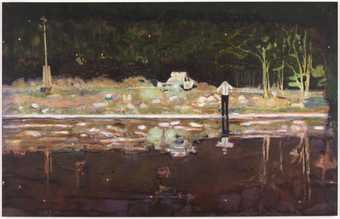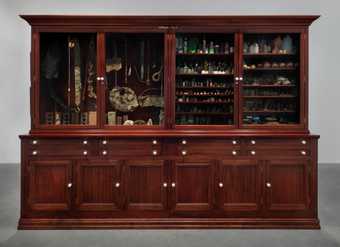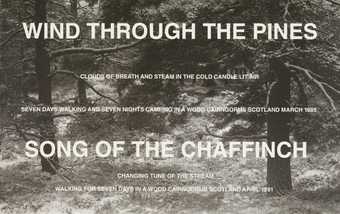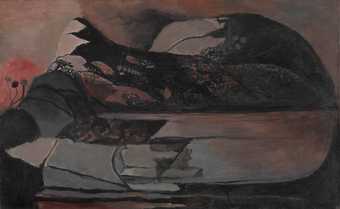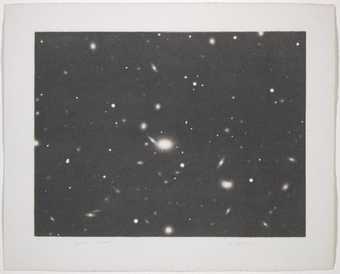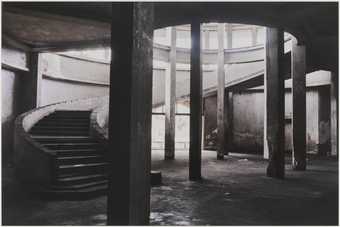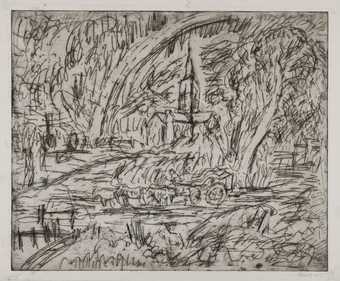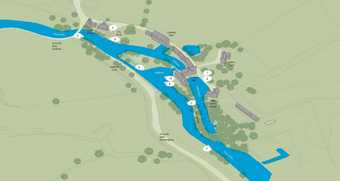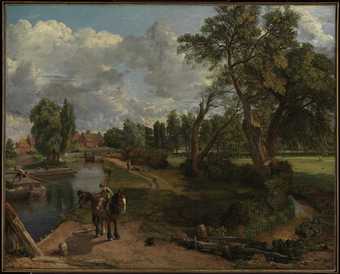
John Constable
Flatford Mill (‘Scene on a Navigable River’)
(1816–7)
Tate
Familiar Places
In a letter to his friend John Fisher, Constable said ‘I should paint my own places best’. The places he knew well and loved best, were the places he we see in some of his greatest works.
Be inspired by Constable's familiar places; look at how other artists have depicted the places close to them; and think about how you can use your familiar places as inspiration for an artwork.
Discuss: An emotional landscape
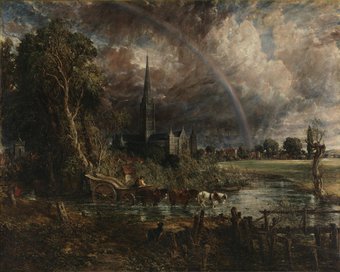
John Constable
Salisbury Cathedral from the Meadows
(exhibited 1831)
Tate
The city of Salisbury in Wiltshire was a place that was close to Constable’s heart. His best friend lived there and he went there on his honeymoon. But it was also a place where he had felt sad – visiting there after his wife died.
Look at this picture of Salisbury Cathedral from the Meadows 1831 (or if you are visiting a gallery where the painting is on display, look at the painting).
- What are your first impressions of the painting? How does the painting make you feel?
- Think of words that describe the painting and your feelings about it.
- How do you think Constable wanted you to respond? How did he use features of the painting to create impact? (Think about WHAT he has included in the picture and HOW he has painted it – e.g. colours, composition and brush-marks)
Watch and Create: 2D to 3D a kids' activity
This film file is broken and is being removed. Sorry for any inconvenience this causes.
Watch this video to explore some of the details of Salisbury Cathedral from the Meadows 1831. Have a go at answering the questions in the video. Then try making a 3D model of a place you know well.
Discuss: A sense of place
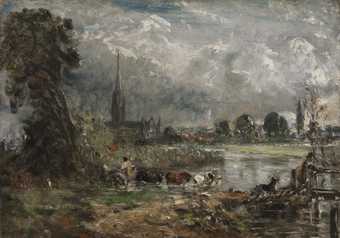
John Constable
Salisbury Cathedral from the Meadows
(?1829)
Tate
Constable painted landscapes and places that were important to him and that he had a personal connection with. Most of the landscapes he painted were of places around where he grew up in East Bergholt in Sussex. In fact he said that it was these places that ‘made me a painter’:
- Why do you think he chose to paint views of places that he knew really well?
- If you were making an artwork about a place you know well, where would it be? What things would your work include?
- How would ‘your place’ be similar or different to Constable’s places?
Watch and explore: Contemporary artists and their places
Artists often use places that are special to them as inspiration for their work. These might be places they grew up in or have a connection with, or places that have moved them in some way.
- Browse the slideshow of artworks to explore some of the very different approaches and techniques artists have used to evoke ‘a sense of place’.
- Use the links below to watch artists talking about places that are important to them
Videos:
- Painter George Shaw explains why the ordinary housing estate where he grew up became the subject of his extraordinary paintings
- Photographer Chloe Dewe Mathews talks about her powerful and evocative landscape photographs that capture the places where soldiers were shot for desertion druing World War I
- Susan Philipsz uses her own voice to create uniquely evocative sound installations that explore the poetics of often out-of-the-way spaces
- ‘The street is my space’ says installation and performance artist Meschac Gaba, as introduces us to his hometown of Cotonou, Benin
Create: A place of my own
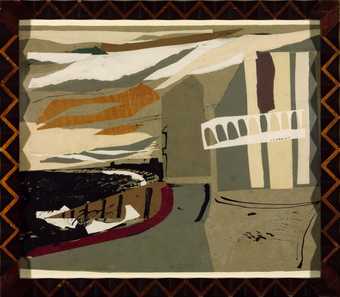
John Piper
Littlestone-on-Sea
(1936)
Tate
Create an artwork, photograph or design exploring a place that is important to you or has inspired you. This place could be where you live or it could be somewhere that you have visited or heard about.
It might help to brainstorm!
- Close your eyes and think about what ‘your’ place looks like. Think about what you can see there. Think about the shapes and colours of the things that are there. Also think about the sounds, the smells and how the place makes you feel
- Now open your eyes and try sketching the place from memory (or from the imagination if it’s somewhere you have heard about). Try and put across the ‘sense of the place’ – what it feels like as well as what it looks like in your sketch. (E.g. if it is a busy bustling place, how would you express this? If it is a calm place, what colours, lines and marks suggest this?) This doesn’t have to be neat and ‘finished’ its just a way of getting down your first thoughts
- Write down ten words that describe this place and why it’s important to you
- Use your sketch and list of words as the starting point for your artwork.
Changing places
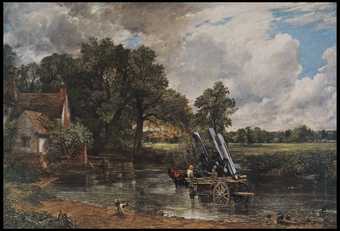
Peter Kennard
Haywain with Cruise Missiles
(1980)
Tate
When Constable was making his great paintings of rural landscapes such as Salisbury Cathedral from the Meadows, there was a lot of change going on in the countryside. Acts of Parliament changed the conditions and rights of people living in the countryside. Industrialisation, the rapid growth of cities and the introduction of machinery to do the jobs that farm labourers would previously have done led to lots of people moving away from the countryside to big cities.
Be a weather watcher
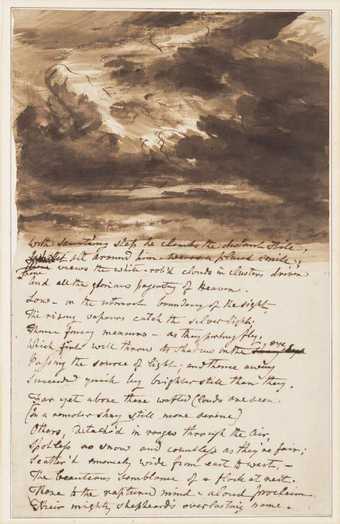
John Constable
Cloud Study with Verses from Bloomfield
(1830s)
Tate
Constable was fascinated by the weather and especially by recording the changes in the clouds. His studies show a remarkable understanding of the structure and movement of clouds.
Research and create:
- Make a cloud diary of your own.
- At a set time each day go outside or look out of your window and make a note of what the clouds in the sky are like. You could make sketches, take photographs or use your phone. Estimate how much of the sky is covered by clouds, or try and describe what the clouds look like.
- There are special names for types of clouds – look them up on a weather website and see if you can classify the clouds you see.
Working practice and techniques
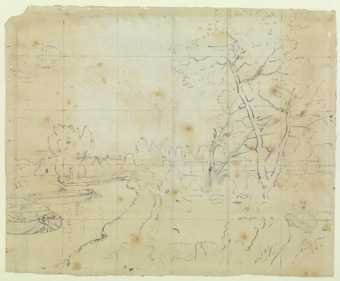
John Constable
Study for ‘Flatford Mill’
(c.1816)
Tate
Explore scale

John Constable
Salisbury Cathedral from the Meadows
(exhibited 1831)
Tate
In the 1820s Constable painted some huge six-foot (188 cm) paintings – also known as ‘six-footers’, of which Salisbury Cathedral from the Meadows 1831 was the last. Part of the reason he painted these huge paintings was to help them stand out at exhibitions. But also, by painting such vast canvases Constable wanted to celebrate landscapes and the importance of landscape painting.
- Make a small drawing of a landscape on a sheet of A4 paper. (You could use a sketch you have already done)
- Mark out a grid over the top of your drawing – make each square 3cm x 3cm. Now grid up an A3 piece of paper with boxes 6cm x 6cm and enlarge your drawing box by box to the new sheet.
- You could also try taking a huge sheet of paper or card outside and make a huge drawing of a landscape on-the-spot!
Hidden details…
Constable not only gives us broad views of landscape scenes, he also focuses in on details.
Nothing was too mundane or commonplace for his art. In a letter to fellow painter Charles Leslie he said, ‘my limited and abstracted art is to be found under every hedge, and in every lane, and therefore nobody thinks it worth picking up’.
Constable felt that it is the traces of everyday life that make a landscape complete and come alive, and his sketch-books are filled with small details which he later incorporated into his paintings. In Salisbury Cathedral from the Meadows 1831 a horse-drawn wagon is shown crossing the River Nadder, and a sheepdog looks up at the Cathedral.
- Look closely at the details in Salisbury Cathedral from the Meadows 1831 using this interactive resource.
- Focus in on one area of the painting and make a drawing of it so that it fills your page.
Explore Constable’s mark-making
At the time that Constable was making art, surfaces of a painting were supposed to be smooth. But the surfaces of Constable’s painting were dabby, blobby and different.
- Watch the conservation video on this page to look closely at the surface of Salisbury Cathedral from the Meadows 1831; and look at these sketches: The Mill Streamc.1810, Stoke-by-Nayland c.1810-11, and A Lane Near Flatford c.1810-11
- What words would you use to describe the surface of Constable’s paintings?
- Imagine you are a critic seeing one of Constable’s works for the first time. Write a review summing up his approach and technique. This could either be defending his technique (say what it is you like about it); or critical of his technique
Find out more
Want to know more about John Constable? From short reads to in-depth learning packs, we have pulled together some extra resources so you can dig deeper into his life and work.

